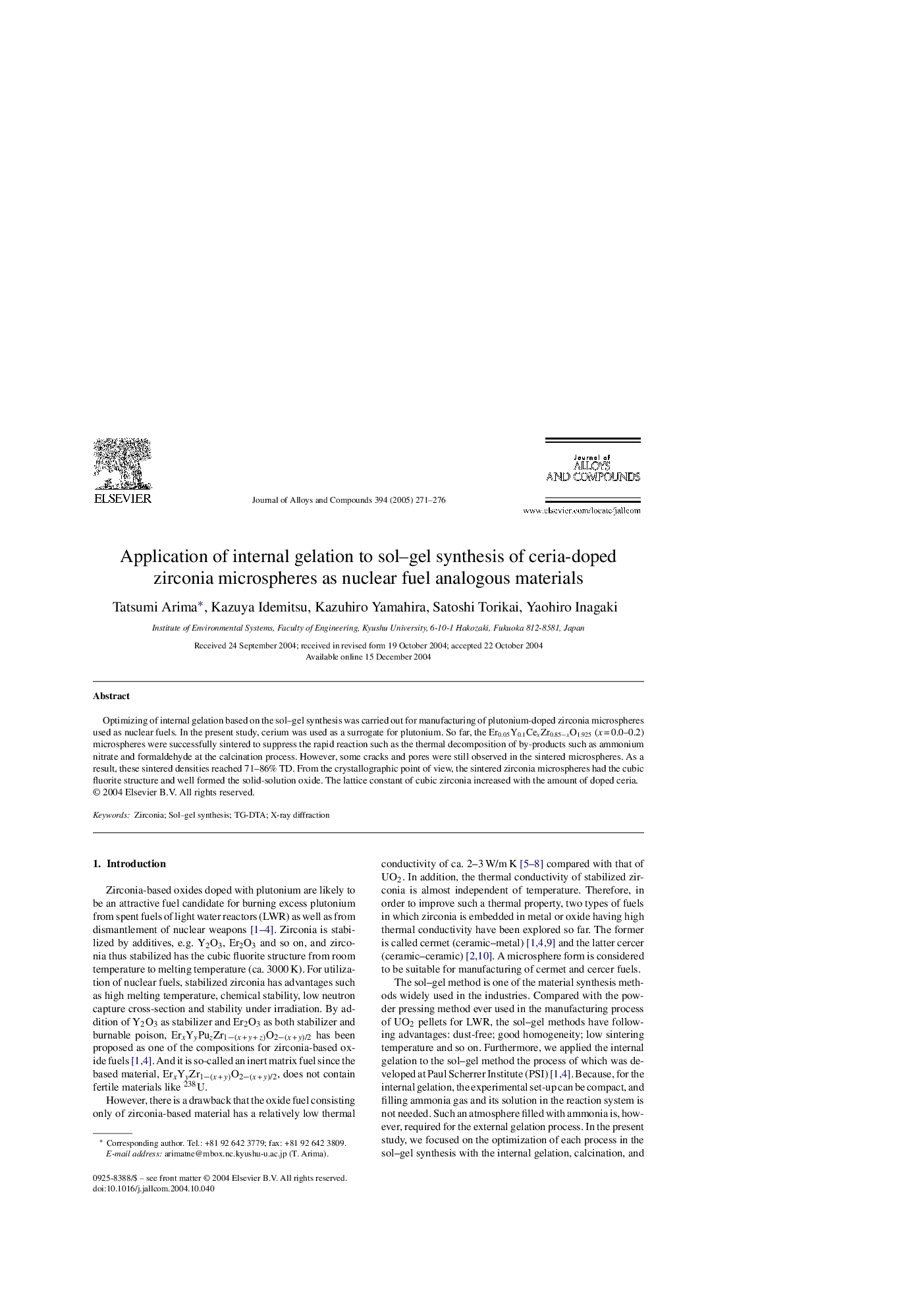| Article ID | Journal | Published Year | Pages | File Type |
|---|---|---|---|---|
| 9803823 | Journal of Alloys and Compounds | 2005 | 6 Pages |
Abstract
Optimizing of internal gelation based on the sol-gel synthesis was carried out for manufacturing of plutonium-doped zirconia microspheres used as nuclear fuels. In the present study, cerium was used as a surrogate for plutonium. So far, the Er0.05Y0.1CexZr0.85âxO1.925 (x = 0.0-0.2) microspheres were successfully sintered to suppress the rapid reaction such as the thermal decomposition of by-products such as ammonium nitrate and formaldehyde at the calcination process. However, some cracks and pores were still observed in the sintered microspheres. As a result, these sintered densities reached 71-86% TD. From the crystallographic point of view, the sintered zirconia microspheres had the cubic fluorite structure and well formed the solid-solution oxide. The lattice constant of cubic zirconia increased with the amount of doped ceria.
Related Topics
Physical Sciences and Engineering
Materials Science
Metals and Alloys
Authors
Tatsumi Arima, Kazuya Idemitsu, Kazuhiro Yamahira, Satoshi Torikai, Yaohiro Inagaki,
